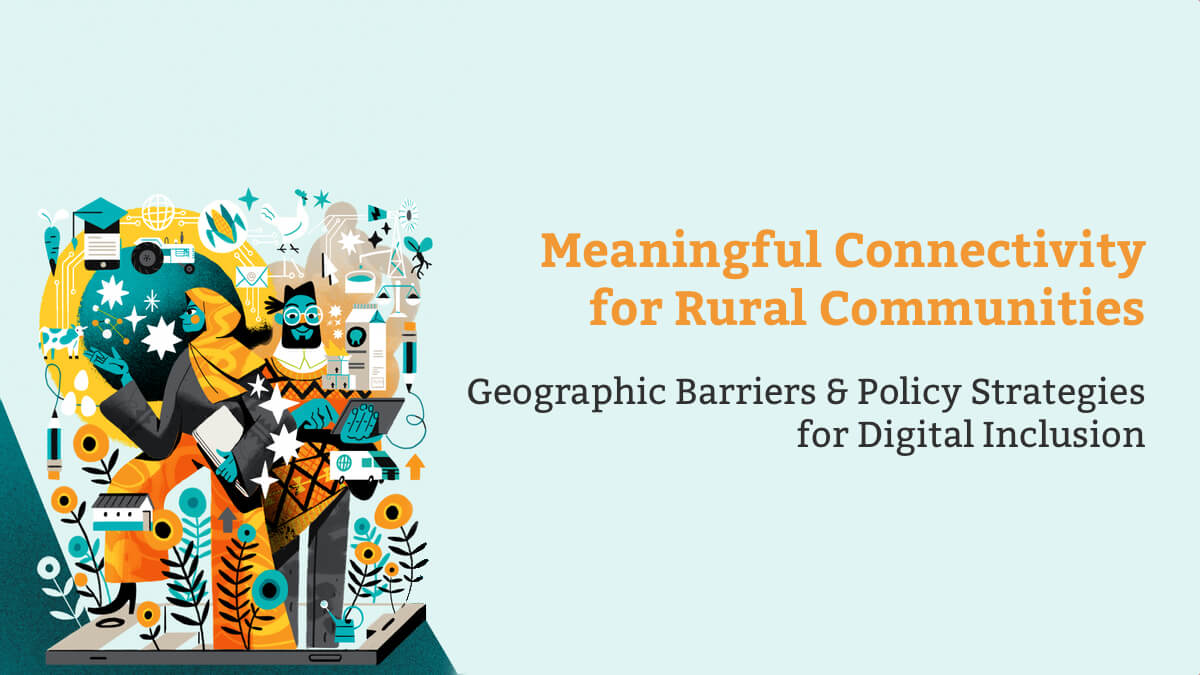
Meaningful Connectivity – Rural Report
April 29, 2022
The reach and quality of internet access in the world is a consequence of the broadband policies we have.
Meaningful connectivity is a valuable policy objective — and meaningful connectivity in rural areas specifically — because of the tremendous potential this kind of access has in increasing countries’ potential to achieve various Sustainable Development Goals.
However, many countries offer underwhelming results in setting rural targets within their national broadband plans and rural-inclusive broadband policies.
This report details the urban-rural connectivity gap in nine low- and middle-income countries (LMICs) and what that means for their potential to achieve the Sustainable Development Goals.
It guides policymakers from the problem (the lack of connectivity) and the consequences (more limited user experiences) to the policy solutions that can aid them in narrowing the connectivity gap and boosting connectivity in rural areas.This report summarises a suite of options available to policymakers, from Brazil to Jamaica, Kenya to Ghana.
How big is the urban-rural connectivity gap?
Across all nine countries we surveyed in this report, roughly only one in ten people have meaningful connectivity. In urban areas, this increases to one in seven. In rural areas, the ratio drops to one of every twenty.
In Mozambique and Rwanda, fewer than one in every fifty people in rural areas have meaningful connectivity. This should alarm policymakers because as a share of the world’s rural population, one in four lives within an LDC country: as part of the world’s online population, only one of every twenty users connects from an LDC country.
We have the opportunity to learn from our past and build better policies that enable greater meaningful connectivity in rural areas.
To learn more about the findings, read the full report.